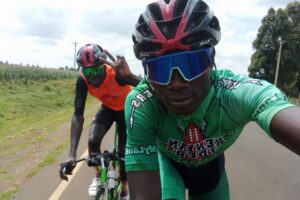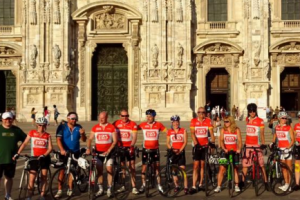


Home » Essentials » Training Plans

Though each of our cycling holidays captures a different flavour of European scenery and cycling, the distances and elevations are all in the same ballpark and you will need to be quite fit to tackle them!
To give you an idea of what to expect: our average daily distance is 87 miles (lowest 44, highest 108). Elevation average is 6077 feet (lowest 1702, highest 9831). A breakdown per tour is as follows:
The riding dynamic on our tours is relaxed and there’s no pressure to go faster than you’re comfortable with, and with a support van to pick you up if you need a rest, there’s no need to feel daunted by the distances.
On this page we’ve rounded up a bunch of information to help you gauge how much training you’ll need, and how to structure a cycling training plan accordingly.
Remember that there’s no right or wrong way to train - it varies massively between rider based on factors including amount of free time, current fitness levels.
We’ve rounded up a few of the questions we get asked frequently, as well as some being asked on internet discussion forums. The insights here will put you in good stead for your training. If you’ve got any other questions let us know in the comments at the bottom of this post.
Average cycling speed varies between riders and groups and based on elevation profiles. On the downhill day of the Geneva to Milan tour for example we’ve had average speeds just shy of 30mph. On the uphill the day before, they were around 6mph!
We aim to be on the road at 8am and ideally arrive each day by 6pm: factoring average daily distances into that time frame gives a time of 7-9mph including time spent at stops.
A century is cycling lingo for a 100 mile bike ride simple as that.
There’s a certain amount of prestige attached to completing your first century, and to each time you break your previous record.
A few of our tour dates have distances just shy of 100 miles: if you’re feeling particularly keen you could keep going at the end of the day until you hit 100 miles! Paris to Geneva has a complete century too.
Ness Knight, one of our team, has written a great post about training for a 100 mile bike ride. You can read it here.
This question was asked on Quora and the answers caught our eye: there’s some great info inside! Check out the full answers here, or see our highlights:
We have four top-level tips for preventing injury while training:
Further tips on avoiding injury during rides are outlined on our blog, courtesy of one of our Ride25 tour crew, Paul “Smudge” Smith (whose many talents include being a professional bike fitter, bike mechanic and biomechanics trainer):
This series was written to help people prepare for one of our tours and will hopefully answer a lot of the questions you might have!
This post discusses key areas:
Read this here. These principles were written as a motivational pickmeup after New Year 2015, but are all still relevant!
Sometimes it’s easier to train for a ride if you have an idea of what to expect beyond the usual route and elevation lines. In this vein we have interviews with people who’ve ridden a Ride25 tour:
A write-up of the Leeds to Paris tour by Mike Donnellanː
And a write-up of the Geneva to Milan tour by Chris Lee:
Of course there are some fantastic resources elsewhere on the internet that will help you plan your training routine. Some of our favourites:
GCN’s videos are particularly recommended if you’re looking for training tips. They cover a huge range of subjects from structuring training plans, to improving climbing technique, to popping wheelies. An example video below:
We also recommend that you join either (or both) British Cycling or CTC who offer great advice, training support and third party insurance for cyclists. We are official partners of both and you can join CTC for just £16 if you quote the code 90074626 on their membership page, here.





